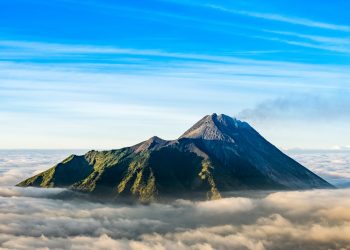Tana Toraja, literally “Torajaland”, is a highland region of Southern Sulewesi Indonesia.
Tana Toraja, the famed “Land of The Heavenly Kings”, lies about 328 km north of Makassar, the capital of South Sulawesi Province, in the central highlands of South Sulawesi.

HOW TO GET THERE
From Soekarno Hatta International Airport in Jakarta, you have to take another flight to Hatta International Airport Sultan Hasanuddin in Makassar.
Tana Toraja is a solid 300-km, 8-10 hours’ drive from Makassar There’s several bus companies making the journey from Makassar to Rantepao and Makale. The cost is 70,000 Rupiah for a bus without air-conditioning all the way up to 150,000 Rupiah for an air-conditioned bus. There’s morning and overnight buses. Frequent mikrolets / bemos leave from Makassar to the bus terminal and take about 40 minutes. Most buses from Makassar to Tana Toraja are clean and comfortable.
CULTURE
The land of the Toraja people (many nominally Christian but most, in practice, animist) is above all famed for their spectacular (and rather gruesome) burial rites. After a person’s death, the body is kept — often for several years — while money is saved to pay for the actual funeral ceremony, known as tomate. During the festival, which may last up to a week, ritual dances and buffalo fights are held, and buffaloes and pigs are slaughtered to ferry the soul of the deceased to the afterlife (puya). The deceased is then finally buried either in a small cave, often with a tau-tau effigy placed in front, inside a hollow tree or even left exposed to the elements in a bamboo frame hanging from a cliff.
Tana Toraja has unique culture set in stunning scenery. Globalisation and tourism may have impact, but if you venture away from the tarmac roads you will find soon a way of life that has not changed much in the last 100 years.
Traditional Tongkonan houses stand proudly in this setting. These intricately decorated houses with upward-sloping roofs are the center of all Aluktodolo (Torajan religion before the coming of missionaries; the ancestors belief) rites; from storing the harvest in the carved rice barns, “alang”, to slaughtering sacred water buffaloes at a week or more-funeral ceremonies. Tana Toraja’s beauty is also reflected in its people. Although they are devoutly Christian (there are small number of Muslims especially in the southern area), they combine this religious belief with magic and mysticism, and welcome visitors to witness their ceremonies.
Tana toraja is a sleepy rural region cultivating rice, cacao, coffee, and clove most of the year. Toraja’s arabica coffee carries a high reputation and is something that visitors may be interested in trying. These all change during the dry season,, from June until September, when Children are home from school, the rice is harvested and it’s time for a “rambu solo”, a complex funeral ceremony of the ancestors. During the time, Rantepao is transformed into a major tourist resort for national and international visitors.
TOURIST ATTRACTION
It is possible to visit most of the famous sites and funerals on your own, although information can be hard to find from most hotel operators. Funerals (tomate) are public events and served by public transport. Avoid offers by guides, telling you that they are private or difficult to access!; ask the tourist information. Go to Tora Tora Primitive Art Gallery; it has a very friendly English-speaking owner who provides free maps of the area. It is on the main street in Rantepao.
- Pallawa — Pallawa site is also a compound of houses and granaries. In total there are 11 houses and 15 granaries.
- Bori Parinding — The site of Bori Parinding is a combination of ceremonial grounds and burials. The ceremonial ground is an open space used for traditional ceremonies, including rituals for the dead and thanksgiving.
- Kande Api — The site of Kande Api consists of a compound of houses and granaries, ceremonial ground and burial places.
- Nanggala — Nanggala site is principally a compound of 2 houses (tongkonan) and 16 granaries (alang), arranged in rows and aligned east-west.
- Buntu Pune — Formerly, the sites of Buntu Pune and Rante Karassik belonged to one integrated settlement.
- Rante Karassik — The site of Rante Karassik is a ceremonial ground on a sloping hill.
- Ke’te Kesu’ — Among the nominated sites, Ke’te’ Kesu’ is the most complete settlement. The site consists of a compound of houses and granaries, burial place, ceremonial ground, ricefields and water-buffalo pasture.
- Pala’ Toke’ — The site of Pala Toke is principally a burial place located on a towering limestone hill, from where a rice field extends to the north, east and west.
- Londa — Londa is a grave site where two methods of burial are customary
- Lemo — Lemo is also a cliff burial site with galleries of ancestor statues.
- Tumakke — The site of Tumakke displays a distinctive traditional house built on a raised terrace.
- Kembira — Site of a burial tree for babies.








































